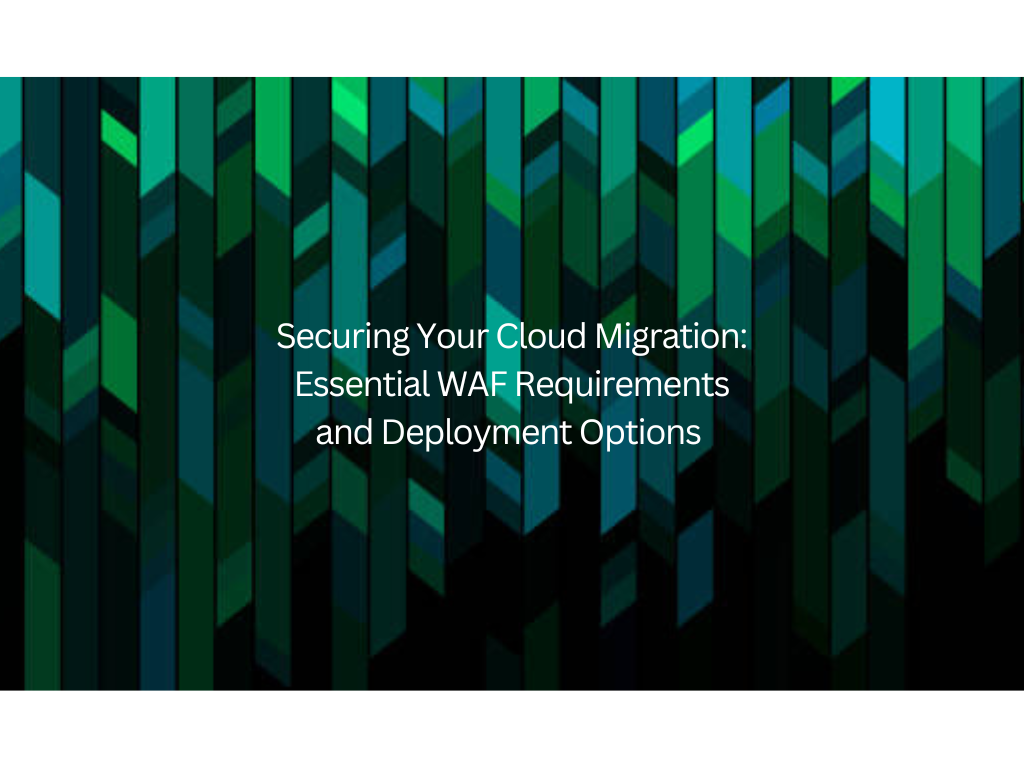As more and more companies move their applications and data to the cloud, ensuring security has become a critical concern. When moving to the cloud, it is important to consider the security implications and ensure that adequate measures are in place to protect your applications and data.
A web application firewall (WAF) is one such measure that can help protect your applications from common web-based attacks, such as SQL injection and cross-site scripting.
In this post, we’ll explore the essential WAF requirements and deployment options to consider when securing your cloud migration.
WAF Requirements for Cloud Migration
- Compatibility: When choosing a WAF solution, it is important to ensure that it is compatible with your cloud platform of choice. Whether you’re using Amazon Web Services (AWS), Microsoft Azure, Google Cloud Platform (GCP), or another provider, compatibility is essential for effective deployment.
- Scalability: Cloud-based applications are highly dynamic and can be distributed across multiple servers, making scalability an essential requirement for any WAF solution. Be sure to choose a solution that can handle the scale and complexity of your cloud-based applications.
- Integration: A WAF solution that integrates with your existing security tools and workflows, such as security information and event management (SIEM) systems, intrusion detection systems (IDS), and security orchestration, automation, and response (SOAR) platforms, can simplify management and improve overall security.
- Compliance: Regulatory and compliance requirements such as PCI DSS or HIPAA must be met by the WAF solution you choose. Be sure to verify that your chosen solution is compliant with any relevant regulations or standards.
Deployment Options for WAF
- Cloud-based WAF: A cloud-based WAF is hosted and managed by a third-party provider and can be deployed in front of your applications to provide protection. This option is easy to set up and is scalable, but may be less customizable and can introduce additional latency.
- On-premises WAF: An on-premises WAF is installed and managed within your own data centre or private cloud environment and can provide greater control and customization. However, this option may require more resources and expertise to manage.
- Hybrid WAF: A hybrid WAF combines elements of both cloud-based and on-premises solutions, allowing you to deploy the WAF where it makes the most sense for your applications and infrastructure.
Choosing the Right WAF Solution for Your Cloud Migration
When choosing a WAF solution for your cloud migration, it’s important to consider your specific security needs and the requirements of your cloud environment. You may need to evaluate multiple solutions and deployment options before finding the one that is the best fit for your organization.
Additionally, it’s important to work with a trusted security partner who can help you navigate the complexities of cloud security and ensure that your WAF solution is effectively deployed and managed.
Ultimately, securing your cloud migration is a critical step in ensuring the safety and integrity of your applications and data. A WAF solution that meets your specific requirements and is effectively deployed can provide the protection you need to operate with confidence in the cloud.




